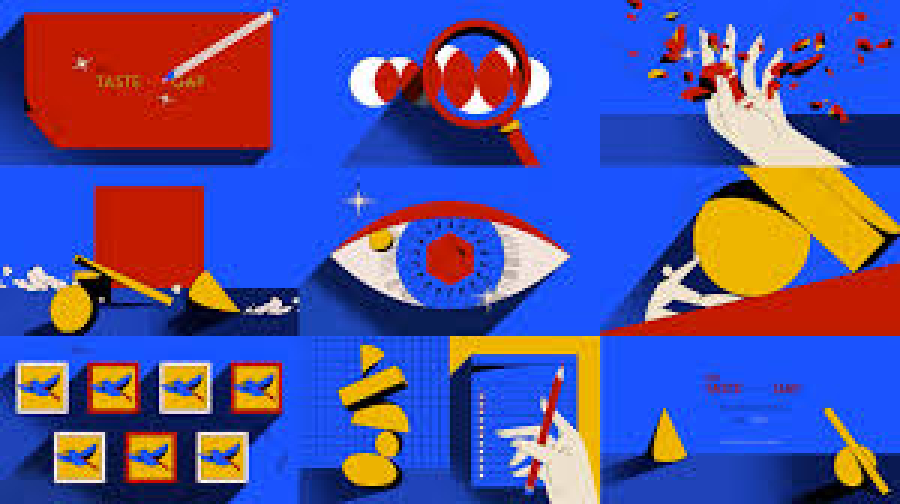Sustainable Graphic Design Practices for Freelancers
In an increasingly eco-conscious world, sustainability is no longer just a trend—it’s a responsibility. While industries like manufacturing and fashion are well-known for their environmental impacts, graphic design also plays a critical role in promoting (or reducing) sustainability. As a freelancer, your choices in design tools, formats, materials, and workflows can significantly impact the environment.
Sustainable design is about more than recycled paper or green logos. It involves creating work that is efficient, long-lasting, ethically produced, and environmentally friendly. Freelancers have the power to make small changes that result in big impacts, from reducing digital carbon footprints to encouraging clients to adopt greener print practices.
This guide outlines practical, sustainable graphic design practices for freelancers, helping you align your creative work with values that matter to your clients, your audience, and the planet.
Long Description
What Is Sustainable Graphic Design?
Sustainable graphic design involves creating visual content that minimizes environmental harm, promotes longevity, and aligns with ethical and eco-friendly values. This includes:
Reducing material waste in print
Lowering energy use in digital assets
Encouraging thoughtful, timeless design
Choosing sustainable vendors and software
As a freelancer, embracing sustainability in your design approach doesn’t just support the planet—it helps build trust and reputation among socially conscious clients and audiences.
Why Sustainability Matters in Freelance Design
✅ Builds Trust with Clients
Many clients, especially startups and eco-conscious brands, actively look for designers who align with their sustainability goals.
✅ Enhances Brand Positioning
Freelancers who adopt sustainable practices can position themselves as leaders in ethical design, attracting a niche market.
✅ Reduces Environmental Impact
From paper usage to digital emissions, small design decisions have a measurable effect on resource use and pollution.
✅ Encourages Long-Term Thinking
Sustainable design promotes quality over quantity, reducing the need for frequent redesigns and one-time-use visuals.
Core Principles of Sustainable Graphic Design
1. Design for Longevity
Create visual assets that are:
Timeless in style
Easily updatable without full redesigns
Scalable across different formats and platforms
Avoid trends that expire quickly and force redesigns within months.
2. Reduce Waste in Print
Printing contributes significantly to environmental waste. Sustainable practices include:
Using recycled or FSC-certified paper
Limiting ink-heavy designs (especially dark or full-bleed)
Printing only when necessary
Choosing digital-first delivery over physical prints
3. Optimize for Digital Efficiency
Digital design still has a carbon footprint. Optimize:
File sizes to reduce energy usage during loading
Image formats (e.g., WebP for web)
Fonts and animations to limit CPU/GPU strain
Websites and emails for faster, cleaner rendering
4. Encourage Reusability
Design templates, style guides, and modular elements that clients can reuse without needing to rehire or redesign frequently.
5. Choose Eco-Friendly Partners
Work with vendors and platforms that prioritize sustainability:
Printers with green certifications
Hosting providers using renewable energy
Tools that minimize data or processing power
Practical Sustainable Design Tips for Freelancers
✅ Use Low-Impact Color Palettes
Lighter backgrounds use less ink in print and less energy in digital screens
Avoid excessive use of black or dark areas in printed materials
✅ Create Print-Friendly Alternatives
Offer clients both:
Digital-first versions for online sharing
Print-optimized PDFs with minimal ink and pages
✅ Design Multi-Purpose Assets
A single design should work across:
Social media
Website
Presentations
Packaging (if applicable)
✅ Recommend Digital Delivery
Instead of business cards or brochures, suggest:
QR codes
Interactive PDFs
Microsites or portfolios
✅ Use Vector Graphics
Vector images are smaller in file size and scalable without loss, reducing the need for multiple assets.
✅ Choose Sustainable Fonts
Yes, even fonts can impact sustainability. Variable fonts reduce loading times and are more efficient.
Digital Sustainability in Graphic Design
Digital design still consumes energy — through:
Website hosting
Data transmission
Screen time
Reduce your digital carbon footprint by:
Compressing images and files
Avoiding autoplay videos or heavy animations
Choosing green hosting (like GreenGeeks or A2 Hosting)
Designing lightweight, fast-loading web assets
Sustainable Design Tools for Freelancers
🛠 Adobe InDesign / Illustrator
Use for layout and print with control over ink coverage and formats
🛠 Canva Pro
Offers templates with minimal color use
Good for quick, web-optimized assets
🛠 Figma
Cloud-based collaboration reduces printing and sharing overhead
🛠 Ecograder
Analyze website performance and digital sustainability
🛠 Pangram Pangram or Google Fonts (Variable Fonts)
Use modern, efficient typefaces that reduce weight
Incorporating Sustainability in Your Freelance Workflow
1. Educate Clients
Explain:
Why digital-first may be more sustainable
The benefits of minimal, timeless design
How eco choices don’t mean sacrificing quality
2. Offer Eco Branding Packages
Position yourself with a unique service:
Logos + brand guides optimized for low impact
Reusable templates
Minimalist brand strategies
3. Reduce Internal Waste
Use digital contracts and invoices
Avoid unnecessary printing
Store files in cloud systems with energy-efficient providers
4. Build a Sustainable Portfolio
Showcase:
Eco-friendly branding projects
Digital-first campaigns
Low-impact design principles
This helps attract clients who value sustainability.
Ethical and Social Dimensions of Sustainable Design
Sustainability isn't just environmental—it includes:
Accessibility: Make designs readable, inclusive, and user-friendly
Cultural Sensitivity: Avoid visuals that stereotype or exclude
Open Licensing: Promote use of open-source assets when possible
Minimalism with Purpose: Focus on essential communication
Designers who embrace ethical design show they care not only about the planet but also about people.
Benefits of Practicing Sustainable Design as a Freelancer
Benefit Impact
Better Client Relationships Shows care and thought
Increased Marketability Appeals to eco-conscious brands
Cost Savings Lower print and file storage costs
Stronger Portfolio Positions you as a forward-thinking professional
Long-Term Relevance Timeless designs mean less rework
Sustainable Design Case Study Examples
1. Eco Brand Identity
You designed a minimalist identity using 2-color print, recycled paper packaging, and a digital launch instead of print media.
2. Digital-Only Portfolio
You transitioned a traditional print portfolio to an interactive PDF or website, reducing material usage.
3. Website Optimization
You helped a client’s site load faster by compressing images, removing heavy video, and using clean code — saving bandwidth and energy.
Add such stories to your freelance portfolio to prove your commitment to sustainability.
Conclusion
As a freelancer, your design choices matter. Incorporating sustainable practices into your graphic design workflow is not just good for the environment — it’s smart for your career.
Sustainable design is about:
Working with intention
Reducing waste
Educating clients
Creating long-lasting value
By adopting sustainable graphic design practices, you contribute to a greener world while positioning yourself as a thoughtful, modern creative professional.
The next time you take on a project, ask yourself not just “What does it look like?” but also “How does it impact the world?”


 by Emily
by Emily




